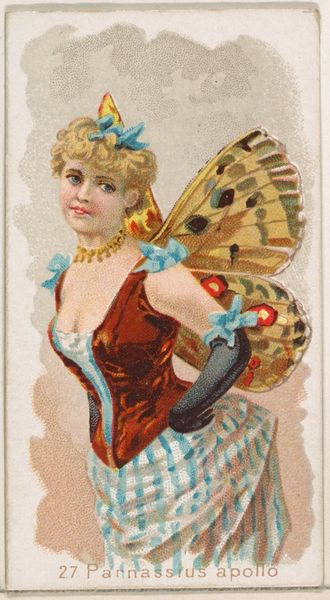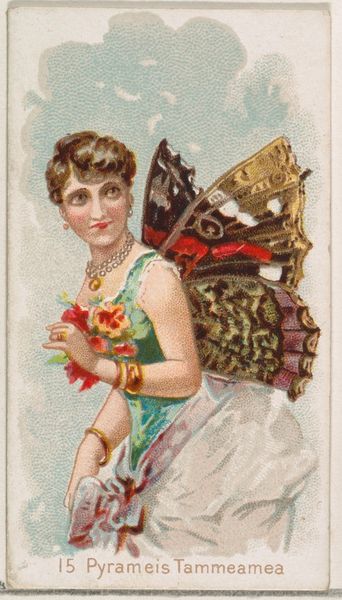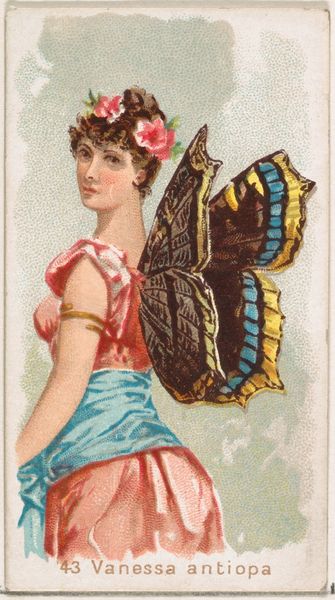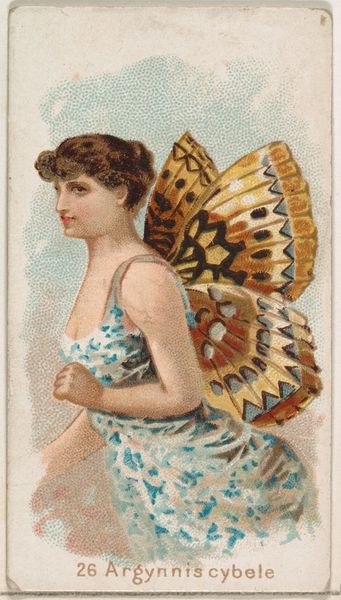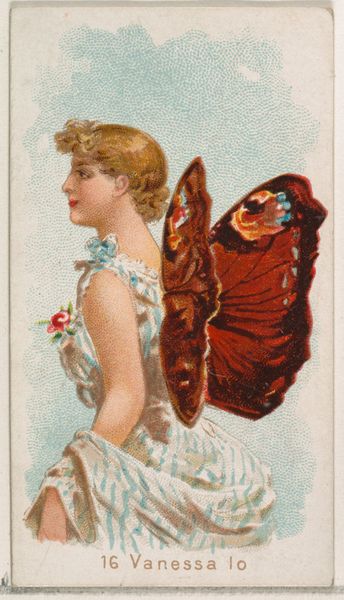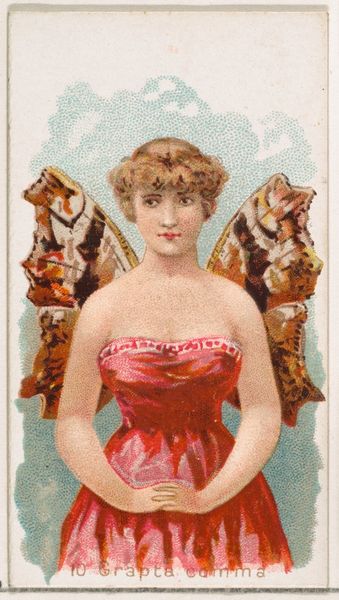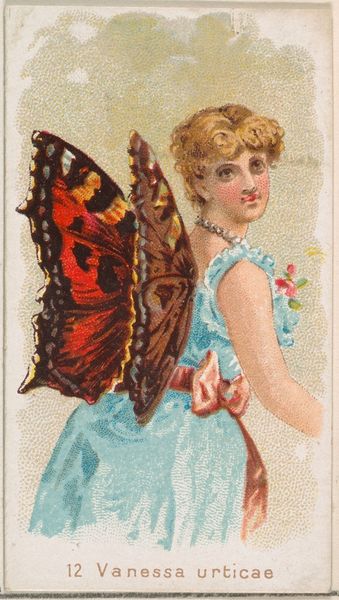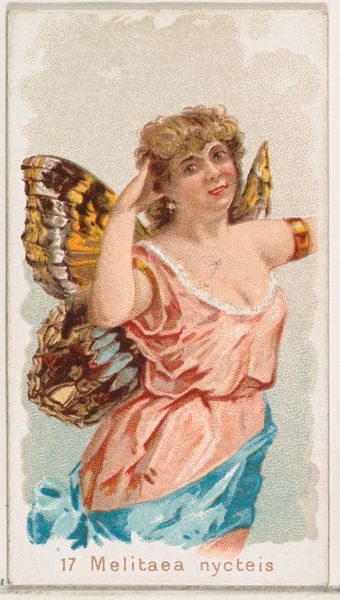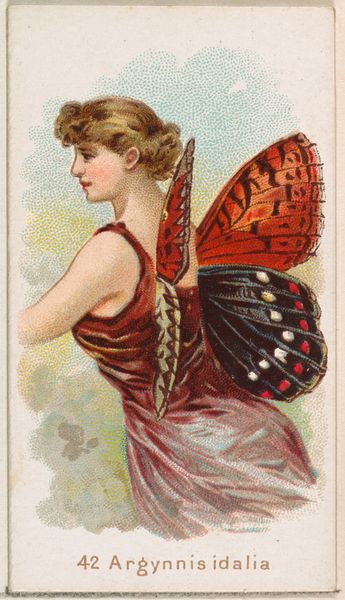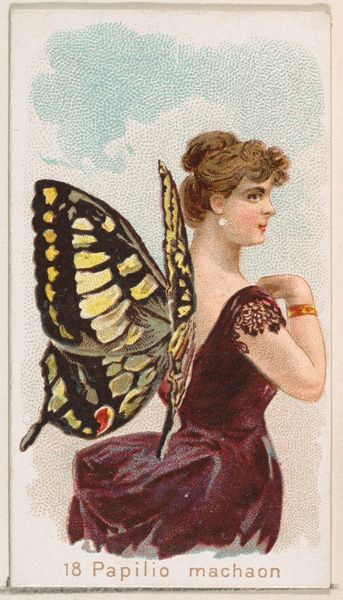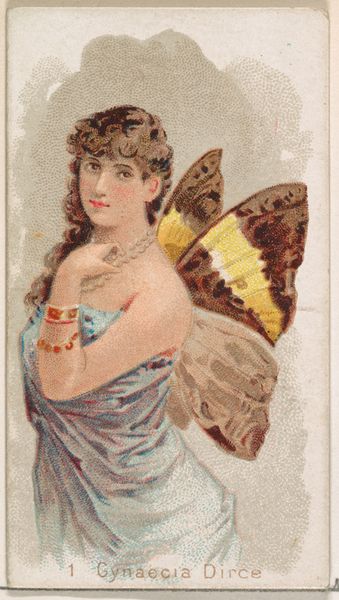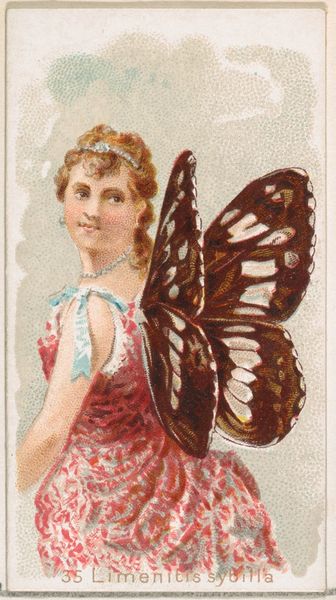
Card 50, Platysamia Cecropia, from the Butterflies series (N183) issued by Wm. S. Kimball & Co. 1888
0:00
0:00
#
portrait
# print
#
watercolour illustration
Dimensions: Sheet: 2 11/16 × 1 1/2 in. (6.9 × 3.8 cm)
Copyright: Public Domain
This is ‘Card 50, Platysamia Cecropia’ from the Butterflies series (N183) issued by Wm. S. Kimball & Co. Notice how the butterfly wings attached to the woman’s back transform her into a delicate winged being. This motif of human-animal hybridity is a common thread in our cultural tapestry, where we project our desires and fears onto the animal kingdom. The butterfly itself is a symbol, par excellence, of metamorphosis, as it embodies transformation. Like the ancient Greek goddess Psyche, or soul, often depicted with butterfly wings, this woman embodies the human longing for liberation. Think of Apuleius's tale, where Psyche's trials mirror the butterfly's own journey of transformation. In a similar vein, we can see the Egyptians' scarab beetle representing rebirth in the daily journey of the sun god Ra. Through the ages, artists have returned to these symbols, each time imbuing them with new meaning. Consider how the symbol engages us on a subconscious level, tapping into primal emotions and universal experiences. And so, the image continues its journey through time, forever changing.
Comments
No comments
Be the first to comment and join the conversation on the ultimate creative platform.
